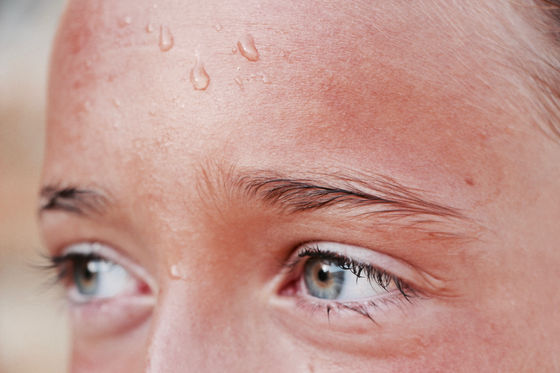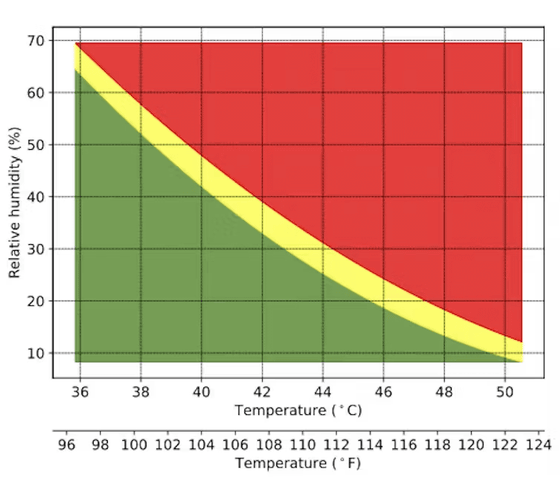How hot can humans endure?

The World Meteorological Organization (WMO)
As heat records fall, how hot is too hot for the human body?
https://theconversation.com/as-heat-records-fall-how-hot-is-too-hot-for-the-human-body-210088

Death Valley in California, USA, recorded 53.3 degrees Celsius on July 16, 2023. In Phoenix, Arizona, it has recorded 43.3 degrees Celsius or more for 19 consecutive days, and nights that do not fall below 32.2 degrees Celsius continue every day. The question that comes to mind as such hot days continue is, ``How long does it take for young and healthy adults to be so hot that they can no longer live a normal daily life?''
The answer depends not only on temperature, but also on humidity. W. Larry Kenny , a physiologist at Pennsylvania State University, and others are conducting research to measure the risk that the combination of humidity and temperature poses to humans, and it is becoming clear that the combination of humidity and temperature is quite dangerous even at lower levels than scientists have thought so far.

A study published in 2010 concluded that a '
In order to verify the numerical value of ``the human body can withstand a wet bulb temperature of 35 degrees Celsius'' cited in this previous study, Kenny et al. conducted an experiment in which young and healthy men and women were exposed to heat stress in a controlled environment.
In the experiment, in order to continuously measure the subject's core body temperature, the subject was asked to swallow a telemetry tablet , and the subject was asked to take a shower, cook, or eat in the test room. In this experiment, the research team gradually increased the temperature and humidity of the test room and monitored the moment when the subject's core body temperature began to rise.
The combination of temperature and humidity at which the body's core body temperature begins to rise continuously is called the ' critical environmental limit ', below which the body can maintain a relatively stable core body temperature for long periods of time. However, when the critical environmental limit is exceeded, the core body temperature rises continuously, and if the critical environmental limit is exceeded for a long time, the risk of developing heat-related diseases increases.

When the human body overheats, it tries to pump blood to the skin to expel heat from the body. Then the heart has to work harder. Also, it seems that body fluid will decrease when sweating for heat dissipation. Such conditions can lead to heat stroke, which can be life-threatening.
Experiments by Kenny et al. have revealed that this critical environmental limit is even lower than the `` wet bulb temperature of 35 degrees Celsius '' in previous research. According to the research team, it is clear that the critical environmental limit is `` wet bulb temperature 31 degrees Celsius (31 degrees Celsius at 100% humidity) ''.
The graph below shows the critical environmental limit determined by Kenny et al.'s research team. The horizontal axis is temperature, the vertical axis is humidity, the green area is below the critical environmental limit ``safe wet bulb temperature'', and the red area is ``dangerous wet bulb temperature'' where the risk of heat stroke increases.

However, it should be noted that this is a condition based only on preventing an excessive rise in body temperature. Even lower temperatures and humidity can well put stress on the heart and other body systems.
Another study found that when pumping blood to the skin, the heart rate begins to rise well before the core body temperature rises. Exceeding these limits does not necessarily lead to the worst case, but long-term exposure can lead to dangerous consequences, such as for the elderly and those with chronic illnesses.
In addition, Mr. Kenny et al.'s research team cites `` providing sufficient hydration '' and `` looking for a place to keep cool even a little '' as `` how to keep the human body safe even at high temperatures ''.
Related Posts:
in Science, Posted by logu_ii







